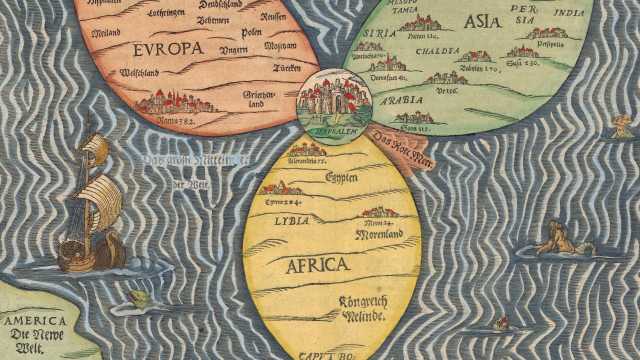95 – The Incredible Shrinking Lake (Chad, That Is)

Lake Chad is not the only inland body of water that’s disappearing under the dual assault of climate change and human overuse. Lake Aral, in formerly Soviet Central Asia, is well known for the picturesque images of boats stranded in the desert. I don’t know how fast the process went with Lake Aral, but as this map demonstrates, it’s been mercilessly swift with Lake Chad. The last of these five maps dates from 2001. I even wonder whether six years later there still is a Lake Chad. Gonna check up on that in a minute.
Lake Chad is – or was – a large inland lake in Africa. It is surrounded by four countries: Nigeria, Niger, Chad and Cameroon. The lake is very shallow, 7 metres at its deepest, and is dotted by islands and mudbanks. Most of its shorelines are made up of marshes. Some 90% of the lake’s water comes from the Chari River.
The present-day lake is the remnant of a much larger inland lake, about 400.000 sq. km at its largest around the year 4000 BC. It has shrunk in summer and expanded (but mainly shrunk) ever since. When Europeans first surveyed in in 1832, it still was one of the largest lakes in the world. In 1908 and 1984, it almost dried out. In the 1960s, Lake Chad again covered 26.000 sq. km, making it the fourth largest lake in Africa. By 2000, it had shrunk to a mere 1.500 sq. km, with an average depth of no more than 1,5 metres.
Lake Chad’s shrinkage has increased in recent decades, due to population growth in the adjacent countries. Nowadays, more than 20 million people surrounding at least partially depend on the lake for potable and irrigable water. Overgrazing surrounding the lake, and subsequent decline in vegetation has caused extensive desertification. According to experts, this environmental degradation is due to resource depletion rather than global warming.
Wikipedia has no recent update on the state of the lake, a quick trawl through the internet shows up this report by the BBC dated January 15, 2007, stating its present size as 500 sq. km and predicting it could disappear in the next two decades.
This map taken here.






